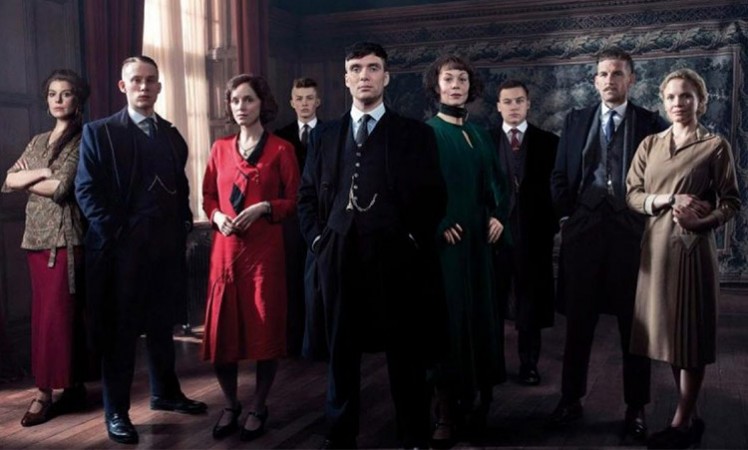
A beloved cartoon series featuring Arthur Read, the bespectacled aardvark, teaches children how to cope with childhood difficulties. Though he has to deal with the challenges of a sister and a big sister, Arthur Read has many friends to play with, including tomboy Francine, foodie Buster, supersmart Brain, and rich girl Muffy. He enjoys spending time with Sue Ellen, a geography expert.
Characters
The animated show Arthur is based on Marc Brown's bedtime stories and features 14 different animals. He wanted to give children an opportunity to see a variety unique animals so the show was born. The first choice is the "shark" aardvark. Later on, the characters are made to grow up to be adults. In the last episode, Muffy is elected mayor of Elmwood City. Francine runs a sneaker store. The show also includes his sister D.W., a police officer. In addition to the adults, Arthur becomes an author of a graphic novel Arthur, which relates his story.

Animation
Read, the bespectacled hero and aardvark of the children’s books, is an excellent example of how to face the challenges of childhood. Arthur is also faced with the problems of his irritating sisters but he manages to overcome them and find happiness through friendships. He is friends with the tomboys Francine, Buster, and foodie Brain.
Voice actors
This page lists the voices of all the characters in Arthur. Most of the cast members appear in the same order on the episodes, but there are some exceptions. Mary can also play the role as the mysterious villain's voice. Another example is the voice of the grumpy old man. These characters have had many voices over the years.
Music albums
You can stream the Arthur cartoon music online. Rounder Records and CINAR Films Inc. own the soundtrack to the PBS Kids special. Marc Brown has an exclusive license. Marc Brown is the owner of all characters and the underlying materials. The series has received contributions from many artists and groups. The latest album includes the theme song "Arce and Friends". It is also available for download on Rhapsody.
Family
The bespectacled aardvark, Arthur Read, plays a central role in the popular cartoon series. He teaches children about how to handle the problems of childhood, such as his sisters' misfortune. Arthur also has many close friends, such as Francine the tomboy and Buster. The super-smart Brain, and Muffy, the wealthy girl, are also friends. Sue Ellen is a geography expert and enjoys playing with Arthur.

Politics
If you're looking for political cartoons and art, look no further than the collection of the Street Prophets Coffee Hour. This open thread is a chance to discuss any issue, and the cartoons themselves are included below the fold. Make sure you check out the comments, as well as links from the community on the cartoons. Arthur cartoon - Politics
FAQ
What are the various styles of commercials you can see?
There are three types of commercials: TV Commercials (TV Commercials), Radio Commercials (Radio Commercials) and Print Ads.
TV Commercials are typically 30 seconds in length. They're frequently used to increase brand awareness.
Radio commercials can be longer than 1 minute and are used for product marketing.
Print ads are usually only 2-3 minutes long, and they're often targeted at specific audiences.
How much time does a commercial air?
Commercials air at different times during the day. Some commercials are shown during daytime, while others air in prime time or late at night.
The majority of commercials air within the hour or every half hour.
What type of advertising is a TV?
Television is a communication medium where images are used for messages. It is the most popular medium of communication in the world. The annual value of the television industry exceeds $100 billion.
There are many types of television advertisements. They can be broken down into two main categories.
-
Commercials are also known as "TV commercials", and last for 30 seconds or more.
-
Programs/Series (also known as "programming") These programs usually last 20 minutes, although some may take longer.
Commercials are shown during commercial break, which is usually every half hour of programming. They are also shown at other times when there is no program being broadcast. This includes infomercials, pre- and post-shows, and public service announcements.
The main component of any channel is its programs. There are usually several series that air each week on most channels. Some networks only show one series per day. Others will run multiple series simultaneously. Some channels focus on news, movies, and sports events.
Since its inception, advertising on television has evolved significantly. In the 1950s, television was primarily used for entertainment purposes. People would watch shows like I Love Lucy, Father Knows Best, Gunsmoke, etc., and then go outside to play with their friends. With the advancement of technology, television became more popular as a way to obtain information about products or services. For example, if someone wanted to buy a new car, he could watch an automotive advertisement and learn what features were available in that particular model.
Why should I care so much about TV?
You must care about TV if your business is a success.
It's a significant source of revenue for many companies.
It is a good idea to study all aspects of TV advertising before you start a business.
This way, you'll know exactly what kinds of ads you should run, where you should spend your money, and how to market your products effectively.
Are TV commercials targeted at target audiences?
Targeting an ad with the right keywords is the best way to reach people.
In other words, if you want to reach someone who watches football on Sunday afternoons, then advertise during football games. Advertising during movie times is a great way to reach people who like movies on Friday nights.
Advertise during prime-time programs if you want to reach people while they're having dinner.
Knowing what people do to your ads is key. That means having access to data about what programs they're watching.
Thanks to new technologies, such as DVRs or streaming video, data is now more easily accessible.
However, everyone is different and each person has their own preferences. It's impossible to predict which program someone will be watching next.
That's why it's important to test different types of ads. Based on real-world feedback, you'll discover which type of ads works best.
What is the average time it takes to create a commercial?
It depends on the size and complexity of the project. A small project might only require one person to film, whereas a large project may have several hundred people working together.
A 30-second spot can usually be completed in between 2-5 days.
Statistics
- In fact, when the ad first launched, Dos Equis quickly became one of the fastest-growing beers, increasing its sales by over 22%. (qualitylogoproducts.com)
- To get estimated costs for airing a 60-second TV commercial in different regional markets, check out the following figures in this TV ad pricing chart from the media experts at Casual Precision. (fitsmallbusiness.com)
- Video-ad views on OTT (over-the-top) devices grew 63% year over year in Q3 2016, and the trend is expected to continue, further crippling traditional TV advertising. (clearcode.cc)
- In fact, 76% of people completely skip the commercials while watching their programs. (qualitylogoproducts.com)
- Radio is extremely accessible – 95 percent of cars have radios, and 99 percent of homes have radios. (marketingevolution.com)
External Links
How To
How can I select which type or advert to run on television?
There are many factors to consider when choosing between traditional print advertisements and digital billboards, TV commercials, radio spots, or television commercials.
First, you must decide whether to look for short-term results or long-term exposure.
An advertisement that generates immediate sales must have short-term exposure. In other words, the advertisement must make people immediately aware of your product or service.
You want to increase awareness for a longer time. This could be for weeks or months.
Next, you will need to decide whether one-off or ongoing campaigns are best.
When you are promoting a single event like a holiday sale or new product launch, one-off campaigns can be used. These campaigns are typically very expensive as they require a lot planning and preparation.
While they are less expensive, ongoing campaigns can be more effective. They allow you to run the exact same ad every week, or month.
You must decide how much money you are willing to spend.
Either invest in large quantities of advertising, or invest in small amounts. An impression of small advertising costs more than one that is larger.
However, if you do not run as much advertising, it will be difficult to reach as many potential clients.